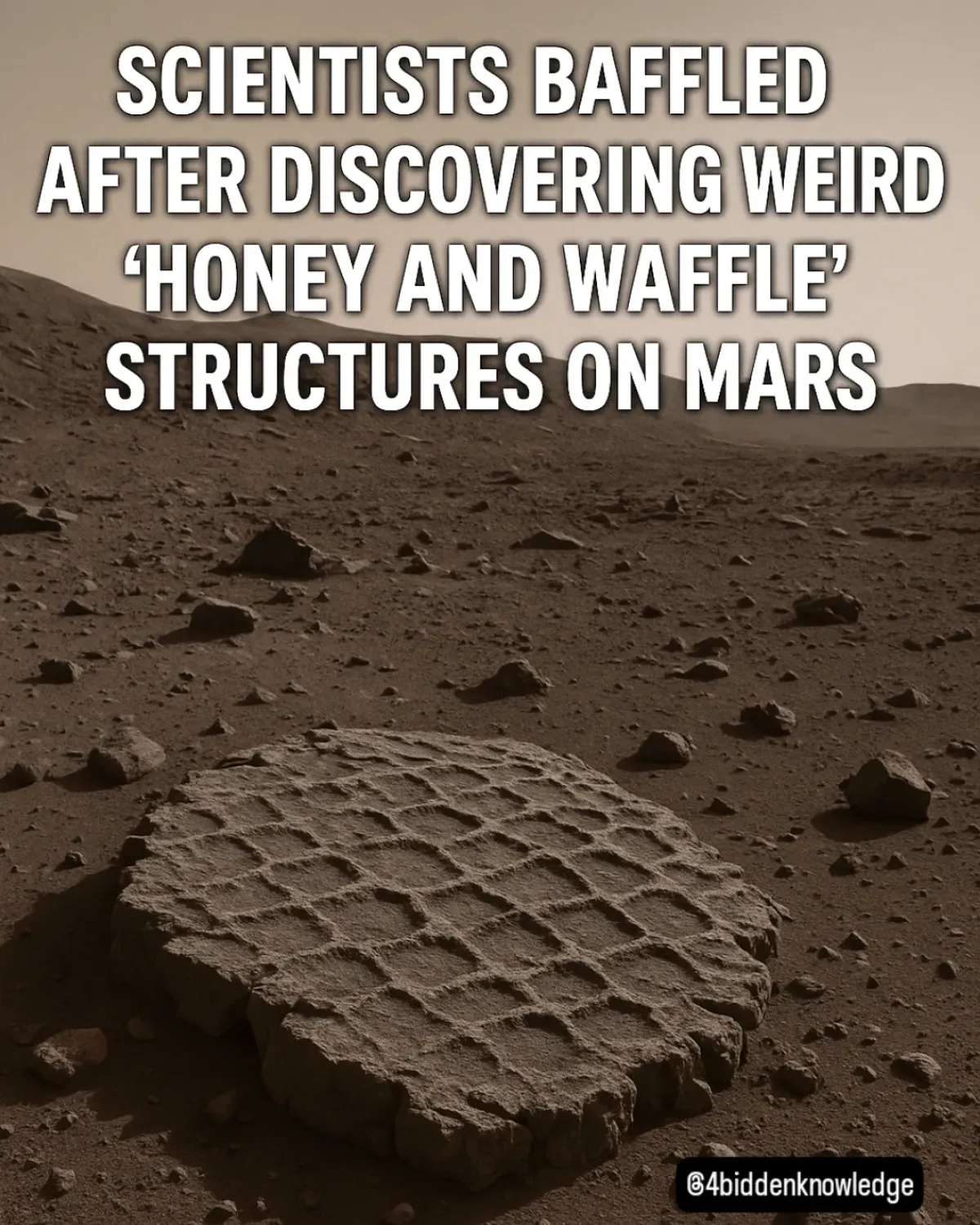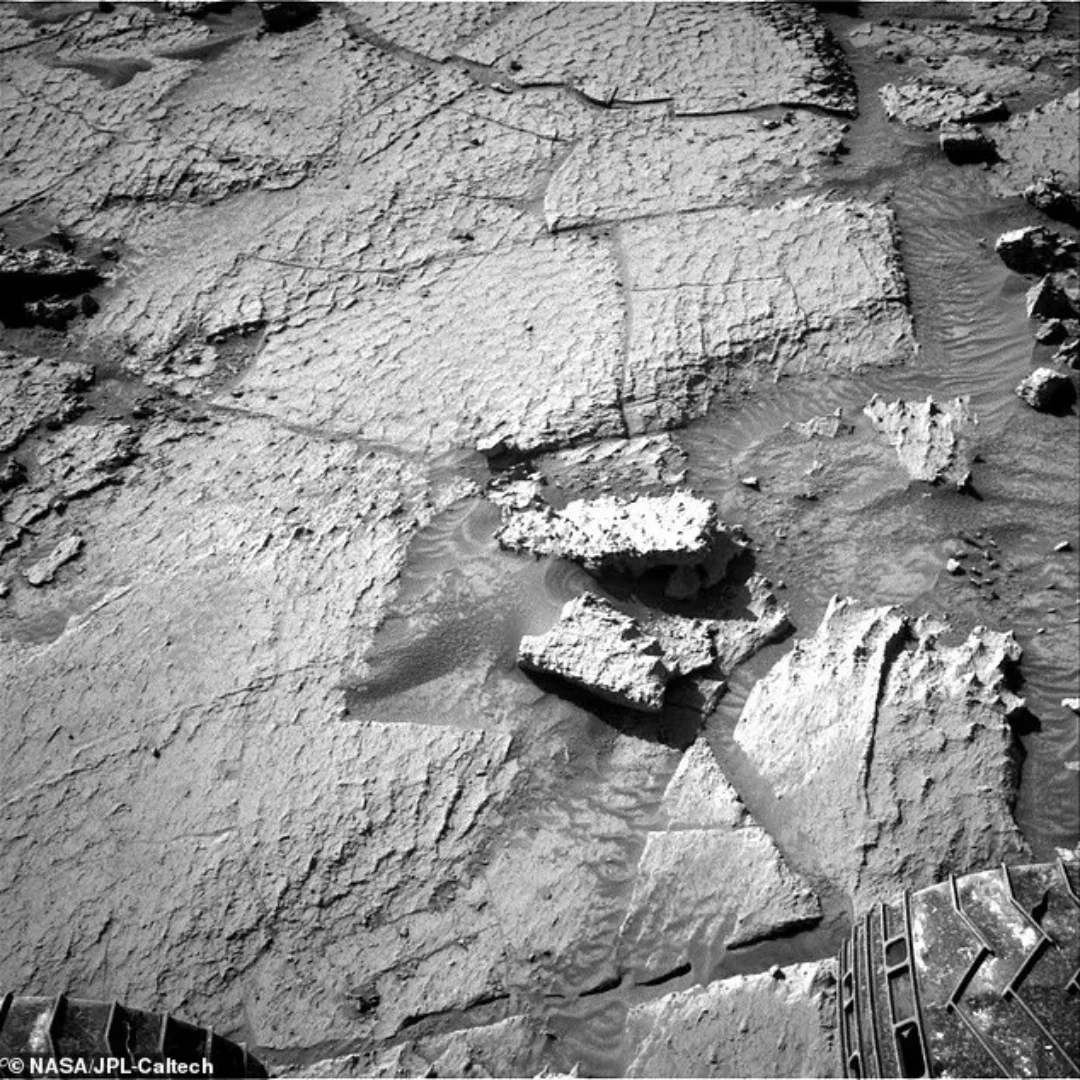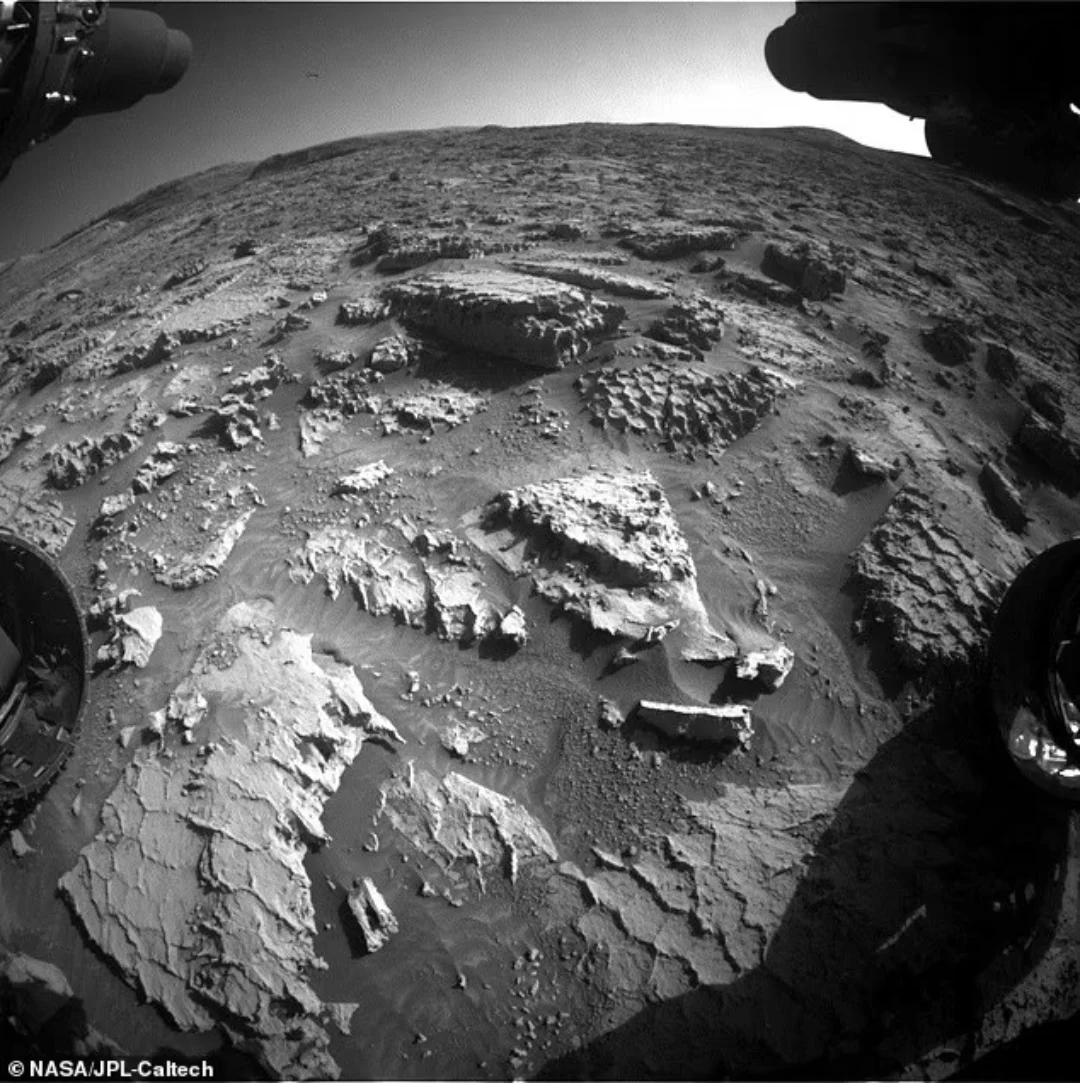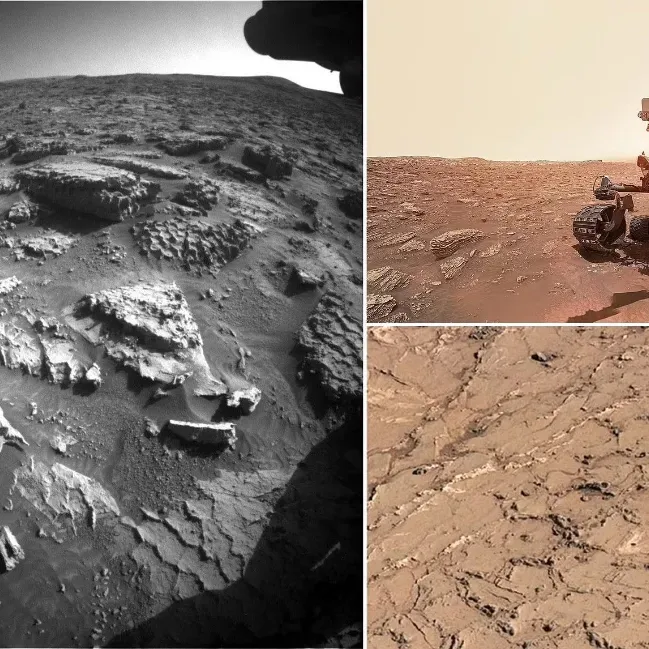NASA Discovers Waffle-Like Formations on Mars
Curiosity Rover reveals rare hexagonal rocks in Gale Crater, hinting at old water cycles!!

Image: Instagram
NASA’s Curiosity Rover has once again captured the imagination of space enthusiasts and researchers alike. While traversing Gale Crater – an area once thought to have been rich in water – the rover uncovered an unusual set of honeycomb-like structures that many are now calling a patch of waffles. This discovery is stirring discussions on the Red Planet’s ancient environment and its potential to have once fostered life.

Discovery At Gale Crater
The unexpected find comes in the form of hexagonal cracks and repeating geometric patterns etched into the Martian rock. Scientists explain that these formations likely resulted from ancient wet-dry cycles in Gale Crater, conditions similar to those that may have spurred chemical reactions on early Earth. With sulphates detected in the rocks – key ingredients in prebiotic chemistry – the possibility that these patterned formations played a role in sparking life is now being actively explored.

Intriguingly, the shapes bear a resemblance to modern-day waffle patterns, prompting both scientific wonder and popular curiosity. Although these structures might be explained by natural geological processes, the debate has now broadened to include alternative views on Mars’s past.

Cosmic Fingerprints
Among the voices adding fuel to the discussion is Billy Carson, a well-known figure in alternative historical circles and the mind behind the #4biddenknowledge movement. Carson recently shared his perspective on the discovery, stating, “These aren’t just formations. They’re cosmic fingerprints.” His comment, widely circulated on Instagram under his official tag @4biddenknowledge, underscores a long-held belief in the possibility of advanced or even intelligent life having once existed on Mars.
Billy Carson has built a reputation for delving into the mysteries of ancient civilizations and planetary phenomena. According to his past posts on Instagram, he has often suggested that Mars might have supported life forms—perhaps even intelligent ones—in a bygone era. His commentary, seen alongside dramatic images and provocative hashtags, continues to resonate with an audience eager for alternative views of space exploration history.
Analyzing The Martian Geology
NASA researchers are now carefully examining the chemical makeup of these waffle-like structures. The presence of sulphates is particularly exciting because similar compounds on early Earth are thought to have helped kick-start chemical pathways leading to the development of life. As scientists continue to study the properties of these rock formations, every minute detail is seen as a potential clue to better understand Mars’s storied past.
The repeating hexagonal patterns are not only of aesthetic interest but may also mirror planetary cycles. Some experts note that such systematic structures have been seen in extreme climates on Earth. This comparison further adds to the intrigue, marking the discovery as a possible piece of the puzzle in reconstructing the environmental conditions that might have supported prebiotic chemistry.
Additional insight has come from related Instagram posts by Billy Carson, where visuals hint at a broader narrative. In one post, an image of similar enigmatic rock patterns was accompanied by a reflective caption, spurring discussions among his followers. Other posts have even touched on the idea that unexplained phenomena on Earth and Mars may have a shared history—an idea that continues to generate discussion among both scientists and conspiracy theorists.
While NASA remains steadfast in its methodical approach to planetary geology, the appearance of these unusual structures has reignited debates in both scientific and popular circles. Researchers are excited by the tangible possibility that these formations could serve as markers of ancient water cycles—a necessary ingredient for life. At the same time, enthusiasts and commentators like Carson are quick to draw parallels between these cosmic formations and the broader narrative of Mars’s potential for past habitability.
The discovery represents a compelling blend of hard science and speculative inquiry. As researchers continue to analyze further data and refine their understanding of the Martian surface, the conversation around these waffle-like patterns is likely to intensify. Whether viewed strictly as geological phenomena or as mysterious signs of a forgotten chapter on Mars, these formations offer a fascinating window into the planet’s ancient history.
This newfound evidence, coupled with Carson’s provocative commentary, leaves us with more questions than answers. What role did these unique rock formations play in Mars’s geological history? Could they be direct indicators of environmental conditions once hospitable to life? As NASA and the broader scientific community work to piece together these clues, one thing remains clear: Mars is far more complex and intriguing than we ever imagined.
Read full bio of Cynthia Jean Daniel



















